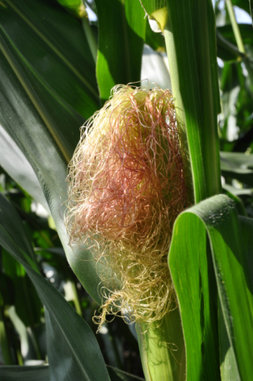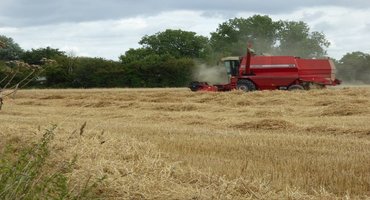Soybean crops in Louisiana lead the country in this category
By Diego Flammini
Staff Writer
Farms.com
The 2018 American soybean crop is starting to bloom in some states.
About 12 percent of the total soybean crop has flowered, the USDA’s June 26 Weekly Weather and Crop Bulletin report says. The crop is ahead of that at this time last year, when the figure was 8 percent.
Louisiana’s soybean crop is 73 percent flowered, which represents the most progress among the 18 surveyed states.
Wisconsin is the only state yet to record any soybeans blooming.
The USDA ranked 58 percent of the national crop as good.
Corn
The U.S corn crop is beginning to silk, the USDA’s report says.
Approximately 5 percent of the total national corn crop has silked. That figure is up from 4 percent at this time in 2017.

Corn in Texas is 57 percent silked, which is the highest among the 18 documented states.
Corn fields in Nebraska, Indiana and Illinois are 2 percent silked, while the crop in several other states has not yet reached this stage.
The USDA ranked 58 percent of the 2018 corn crop as good.
Wheat
The 2018 winter wheat harvest continues across the country.
Wheat producers have completed 41 percent of the national winter wheat harvest, the USDA says. That progress represents a 14 percent increase from last week.
Growers in Arkansas are almost finished their winter wheat harvest.

Producers in Nebraska have only harvested 1 percent of their crop.
And growers in five states including South Dakota and Washington have not harvested any winter wheat yet.
The USDA ranked 28 percent of the national winter wheat crop as good.
The 2018 American spring wheat crop continues to head.
About 34 percent of the U.S. spring crop has headed, the USDA says. That figure represents an increase from 9 percent last week.
On a state level, Washington’s spring wheat is the furthest along. The crop is 81 percent headed, which represents a 36 percent increase from last week.
The spring wheat in Montana is 23 percent headed, which is the lowest progress of the six states documented.
The USDA ranked 63 percent of the spring wheat crop as good.
Suitable fieldwork days
The states with the most suitable fieldwork days for the week ending June 24 were:
Nevada and Arizona – 7
New Mexico and Utah – 6.9
Oregon – 6.6
During that week, the states with the fewest suitable fieldwork days were:
Ohio – 2.8
Illinois and West Virginia – 3.2
Minnesota – 3.3
Weekly precipitation levels
State | Precipitation (inches) | Weather Station |
Illinois | 4.01 | Moline |
Indiana | 4.19 | Fort Wayne |
Iowa | 5.37 | Cedar Rapids |
Kentucky | 1.35 | Paducah |
Michigan | 0.58 | Houghton Lake/Traverse City |
Missouri | 1.73 | Springfield |
New York | 0.84 | Albany |
Pennsylvania | 2.27 | Pittsburgh |
Tennessee | 1.44 | Chattanooga |
The next Weekly Weather and Crop Bulletin will be released on July 3.